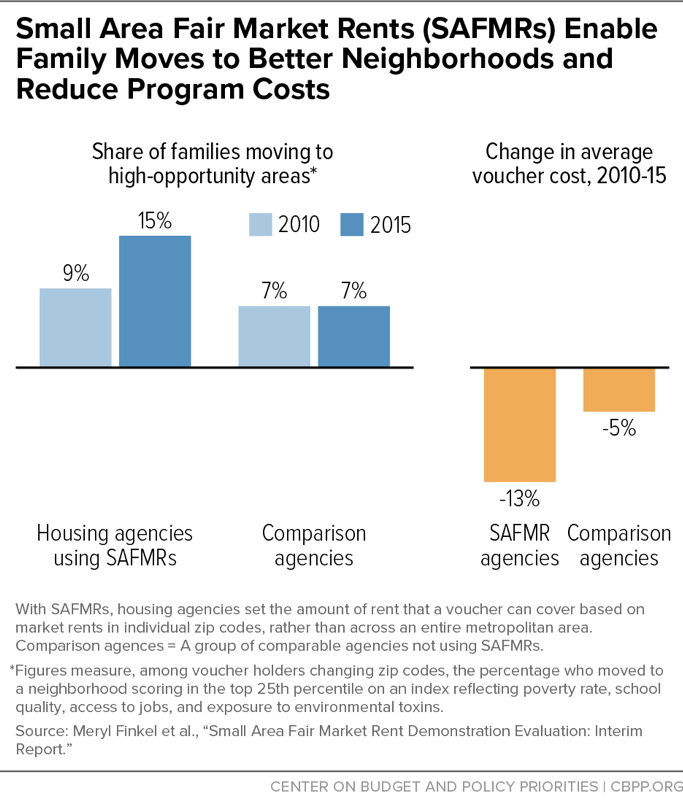BEYOND THE NUMBERS
New Funds Will Help Housing Agencies Expand Opportunity for Families With Vouchers
The Department of Housing and Urban Development (HUD) is giving state and local housing agencies more funds to help them carry out a promising new policy to enable families with Housing Choice Vouchers to move to higher-opportunity neighborhoods. Agencies must apply by December 31 to receive the funds.
Starting in 2018, housing agencies in 24 metropolitan areas must set the amount of rent that a voucher can cover based on market rents in individual zip codes, and agencies in other areas have the option to do this. This new policy, called small area fair market rents (SAFMRs), is an alternative to HUD’s longstanding approach of capping voucher subsidies based on fair market rents (FMRs) across an entire metropolitan area.
Metro-level FMRs are often too low to cover market rents in some neighborhoods and higher than needed in others. Thus, they make it harder for families to use vouchers in higher-rent neighborhoods (which often have low poverty rates, low crime, and well-performing schools) and as a result, encourage them to live in lower-rent, higher-poverty neighborhoods. Metro-level FMRs can also foster racial and ethnic segregation by preventing voucher holders of color from renting housing outside of neighborhoods with high concentrations of residents of color.
By contrast, SAFMRs better reflect neighborhood rents and give voucher holders more choice about where they live. A study comparing agencies that tested SAFMRs to similar agencies that continued using metro FMRs found that SAFMRs worked largely as intended, enabling more families with vouchers to move to low-poverty, high-opportunity neighborhoods (see chart). A growing body of research shows that moving to low-poverty areas improves adults’ health and children’s chances of attending college and long-run earnings. Moreover, SAFMRs reduced average voucher subsidy costs significantly, because savings in low-rent neighborhoods exceeded added costs in high-rent ones.
The additional HUD funding for housing agencies will help cover the modest administrative costs agencies incur from switching to SAFMRs, including agencies required to use SAFMRs and those that choose to do so. (Overall, those administrative costs appear to be a small fraction of the subsidy savings from SAFMRs, but agencies can only use the subsidy savings to provide vouchers to needy families on their waiting lists; they can’t put them into their administrative budgets.) Agencies must submit an application to HUD by December 31 to receive the funds and they can’t apply until their board votes to begin using SAFMRs in their voucher program, so HUD’s announcement should encourage agencies that have been slow to adopt SAFMRs to do so promptly. In addition, agencies can use the added funds to make SAFMRs even more effective, such as by providing search assistance to help families find homes in the high-opportunity neighborhoods that SAFMRs make more accessible.
HUD could take another important step to support SAFMR implementation by enabling agencies whose voucher subsidy costs rise due to SAFMRs to seek funds to cover those costs. SAFMRs have reduced subsidy costs overall, but an agency that mainly serves high-rent neighborhoods could see its costs rise (since it will have little or no savings in low-rent neighborhoods to offset costs in higher-rent ones) and be forced to serve fewer families if it doesn’t receive added funds. Congress gives HUD authority each year to provide supplemental voucher subsidy funding to agencies facing certain special circumstances. HUD should make clear when it distributes 2019 funding that added costs resulting from SAFMRs will qualify for added funding.

